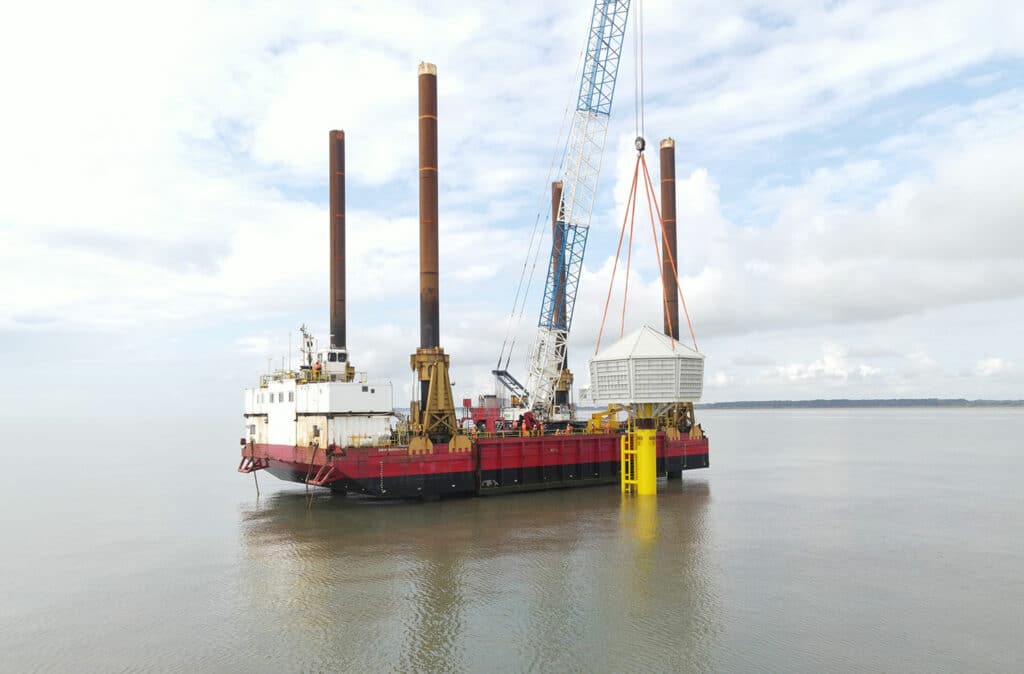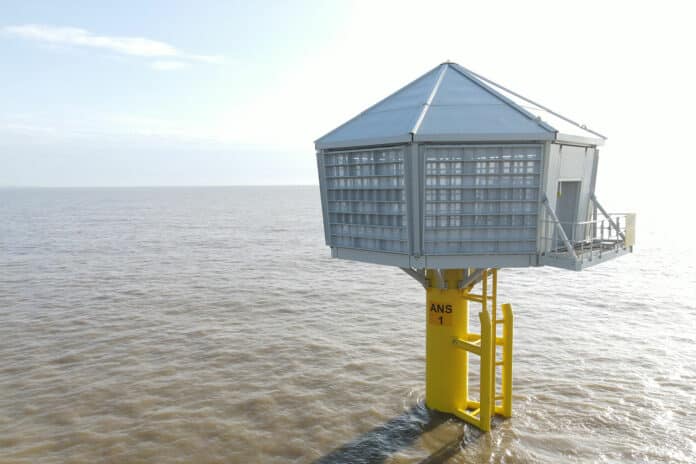Red7Marine and Danish multinational Ørsted have teamed up and successfully installed three nearshore artificial nesting structures (ANS) along the East Coast of England.
The trio of massive birdhouses is a part of the Development Consent Order for the Hornsea 3 Offshore Windfarm project as an ecological compensation measure for a vulnerable seabird species – the Black-legged kittiwake (Rissa tridactyla). It’s also the first UK offshore wind project to require ecological compensation.
The UK Department for Business, Energy, and Industrial Strategy awarded the contract for the Hornsea 3 Offshore Windfarm project to Ørsted in July of last year.
The offshore wind farm will be located off England’s east coast, around 120 km (75 miles) from Norfolk and 160 km (99 miles) from Yorkshire. Once completed in 2025, Hornsea 3 will provide the country with roughly 2.85 gigawatts of power – enough to power over 3 million households.
The three artificial nesting structures have been installed off the Suffolk shoreline. Two of these are located approximately 1km from the shoreline of South Beach, Lowestoft, while the third is 1.4 km from the shoreline of the Royal Society for the Protection of Birds’ Minsmere Nature Reserve.
Each structure is purpose-built, bespoke, and specific to the landscape characteristics of each location and can house 500 nests for the gulls. The UK-based marine contractor Red7Marine hopes they will provide researchers with the means to monitor the bird population’s health over the course of the farm’s entire lifespan.

The three ANS required a pair of jack-up barges alongside a host of other tools to build. According to Red7Marine, the structures were designed by a team of ecologists, architects, and engineers to ensure they are attractive to kittiwake and fit in with the landscape. They each have eight side walls, seven featuring narrow ledges to replicate kittiwakes’ natural cliffside habitats, while the remaining side of the structure has barn doors for emergency access.
The main structure is painted off-white to blend in with the sky and sea. The base is yellow, and there are navigation lights on the off-white nesting structure. And the interior is furnished with tables, chairs, and whiteboards for researchers visiting the locales.
The constructions are made up of a monopile foundation and an interior grouted jacket. Each monopile weighs more than 30 tons and has an embedded depth below the seabed of 30 meters. The upper pile sleeve is fitted with two vertical steel tubes for vessel berthing, and the final component is the topside nesting structure.
“We are delighted to announce the successful completion of ‘Project RISSA’ involving the installation of three artificial nesting structures,” said Kristen Branford, Managing Director at Red7Marine. “These structures will play a crucial role in supporting an important and vulnerable species whilst enabling the generation of clean, green electricity for the Hornsea 3 project. This project is the first of its kind and required meticulous planning and consideration, and we are proud to have achieved this significant milestone.”
